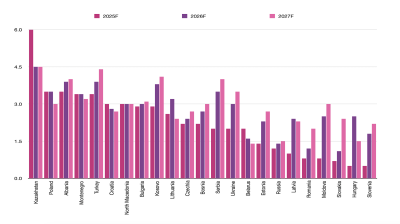New data released last week by Nato exemplifies how profoundly the realities of foreign relations have changed over the course of the past three years, Statista reports.
The military alliance announced that all 31 member nations with armed forces are expected to reach the shared goal of spending 2% of gross domestic product on defence this year. Agreed upon in 2014, the 2-percent threshold had been a source of contention within Nato over the years - including during US President Donald Trump’s first term in office - and suffered setbacks as a result of the coronavirus pandemic.
However, with the invasion of Ukraine by Russia in 2022 and Trump back in office, the once elusive goal is now marked as realized by the alliance. As suspicion of Russia and China mounts in the West while military superpower the United States is pulling away from international engagements, Europe is undergoing a pivotal moment. This has been dubbed the “Zeitenwende” in Germany, meaning watershed moment or more literally “turning of the times”. As seen in Nato numbers, other European countries also seems to feel the need to up defence readiness, especially those in the continent’s Eastern and Northern parts.
Nato numbers show that at the time of the 2-percent goal’s inception at the 2014 Wales summit, only three member nations were spending the recommended share of GDP on defence. These were the United States, the United Kingdom and Greece, which have all spent more than 2% consistently to this day. Maybe more gravely, only four additional nations at that point even spent above 1.5% of GDP on their militaries, namely France, Poland, Estonia and Croatia.
Over the years, these numbers crept up slowly to 10 nations hitting the target and 18 in total at or above 1.5% in spending in 2020 - still only a somewhat over half of Nato’s members at the time. Numbers largely stagnated in 2021 and 2022 during the Covid-19 pandemic. Yet, from 2023 onwards, the tables have turned and even chronic laggards stepped up to their self-imposed demands. The biggest leaps in terms of spending between this year and last were done by Luxembourg, upping estimated military expenditure from 1.2% to 2.0% of GDP, as well as by Belgium (up from 1.3%) and Slovenia and Spain (up from 1.4%) over the same time period. One non-European nation, Canada, upped spending from 1.5% in 2024 to 2.0% in 2025, the same as Italy.
Meanwhile, Denmark had already increased military spending from 1.3% of GDP in 2022 to 2.0% in 2023, while Czechia did so between 2023 and 2024. The Scandinavian nation reached 3.2% of GDP in defence spending this year, more than doubling expenditure over the course of three years. It is therefore well on its way towards Nato’s new goal, set this year, of spending 3.5% of GDP on the military by 2035. Germany, whose turnaround from a nations reluctant on all things defence to a big reformer in the field has been most closely watched, hit 2.0% in 2024, up from 1.6% in 2023. The 2025 figure is still outstanding.
The biggest spender in Nato in relative terms is not the United States, which is spending 3.2% of GDP on its military in 2025, down from a recent high of 3.6% in 2020. Spending as a share of GDP is already higher in Estonia (3.4%), Norway (3.4%), Latvia (3.7%), Lithuania (4.0%) and Poland (4.5%) as especially Eastern and Northern European countries continue to grow defence spending fast. The figure also reached 2.8% in Finland, doubling in four years, around the same rate as Lithuania’s increase. Both Norway and Poland more than doubled their spending over the three years between 2022 and 2025.
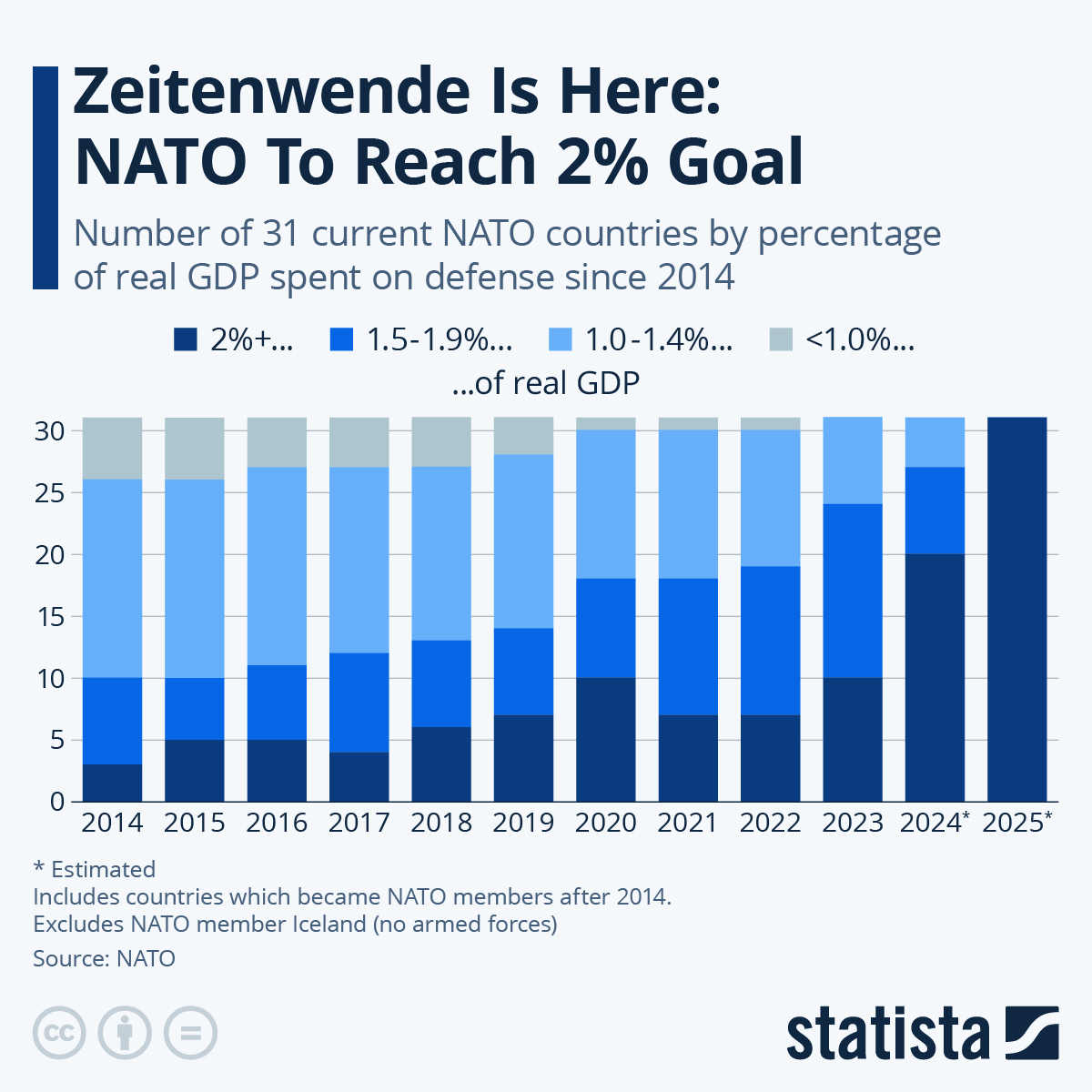 You will find more infographics at Statista
You will find more infographics at Statista
Data
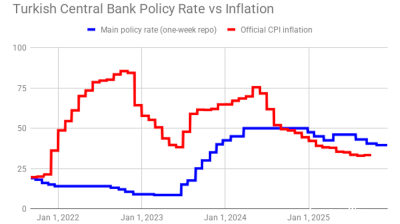
Turkey's central bank remains cautious, delivers 100bp rate cut
Decision comes on eve of next hearing in trial that could dislodge leadership of opposition CHP party.

Polish retail sales return to solid growth in September
Polish retail sales grew 6.4% year on year in constant prices in September, picking up from a 3.1% y/y rise in August, the statistics office GUS said.
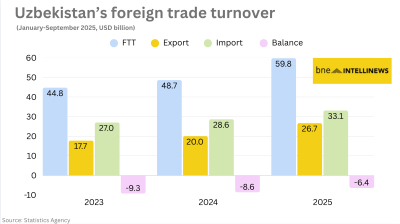
Uzbekistan’s nine-month foreign trade nears $60bn
Export growth of 33% and import expansion of 16% y/y produce $6.4bn deficit.
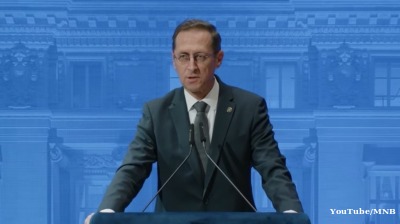
Hungary’s central bank leaves rates unchanged
National Bank of Hungary expects inflation to fall back into the tolerance band by early 2026, with the 3% target sustainably achievable in early 2027 under the current strict policy settings.


